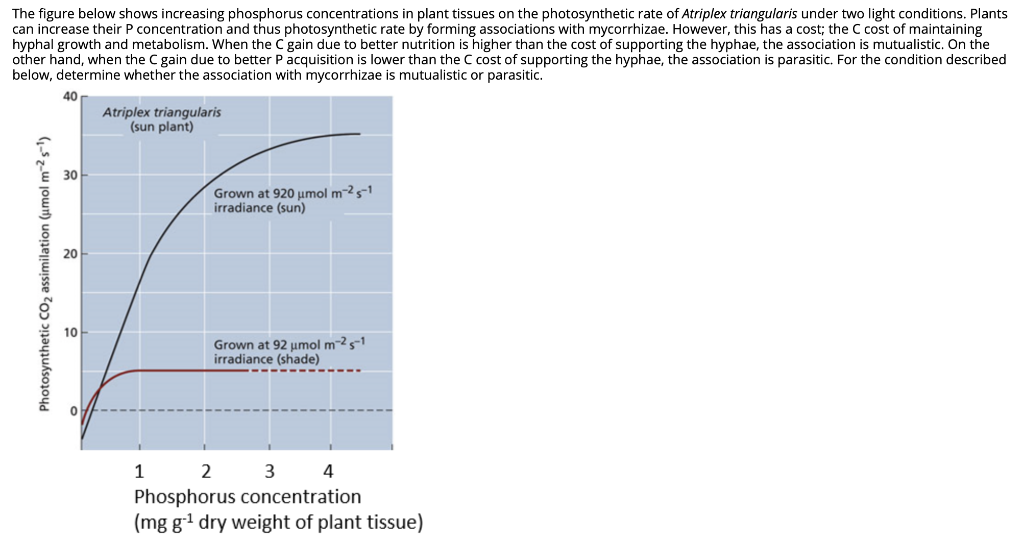

The figure below shows increasing phosphorus concentrations in plant tissues on the photosynthetic rate of Atriplex triangularis under two light conditions. Plants can increase their concentration and thus photosynthetic rate by forming associations with mycorrhizae. However, this has a cost; the cost of maintaining hyphal growth and metabolism. When the C gain due to better nutrition is higher than the cost of supporting the hyphae, the association is mutualistic. On the other hand, when the gain due to better P acquisition is lower than the cost of supporting the hyphae, the association is parasitic. For the condition described below, determine whether the association with mycorrhizae is mutualistic or parasitic. 40 Atriplex triangularis (sun plant) 30 Grown at 920 umol m-25-1 irradiance (sun) 20 Photosynthetic CO2 assimilation (umol m-25) 10 Grown at 92 umol m-25-1 irradiance (shade) 1 2 3 4 Phosphorus concentration (mg g2 dry weight of plant tissue) Without mycorrhizae, plants have a P concentration of 0.5 mg g-1 dry weight and with mycorrhizae, a P concentration of 1.5 mg g g-1. The cost of maintaining the hyphae is 0.2 mol of C per day, and each plant is photosynthesizing 12 h per day with a photosynthetic area of 1 m2. Under high light intensity, the association is (mutualistic/parasitic) _ because the increase in photosynthesis due to mycorrhizae is mol of C day-1, which is (more/less). than the cost of supporting the hyphae. Under low light intensity, the association is (mutualistic/parasitic). because the increase in photosynthesis due to mol of C day-1, which is (more/less) — than the cost of supporting mycorrhizae is the hyphae.
没有找到相关结果